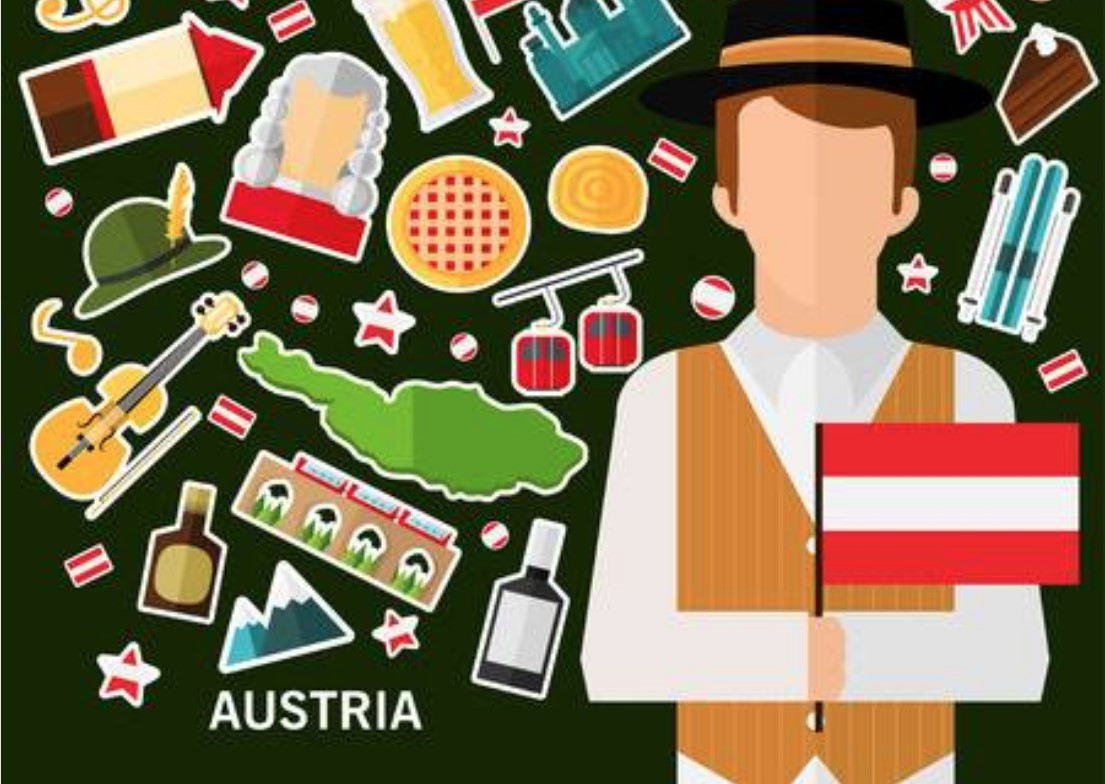Have you ever considered translating your documents or web content into German? Well, first of all, you'll be interested to know that there are several varieties of German. As with other languages, such as English, which shows linguistic differences between the various English-speaking countries such as the USA and United Kingdom, German also has varieties among the German-speaking countries. We will not use the same German if we decide to translate our documents for the German public, which, for example, if we want to address the Swiss market.
After reading this article you will have an idea of what the differences in German are and will be able to assess their importance, so that you can apply the variety that best suits your needs.
[TOC]

When we think of German, Germany comes straight to mind, its Oktoberfest, its famous curry sausages and its Glühwein. However, there are a total of six countries in Europe where German is an official state language: Austria, Belgium, Germany, Switzerland, Liechtenstein and Luxembourg. Moreover, in other countries such as Italy, Poland, the Czech Republic or Hungary, German also plays a major role.
Indeed, German is more present than we think. It is estimated that it is the mother tongue of 100 million people and 80 million practice it as a second language. Approximately 16% of Europeans speak German and it is one of the official languages used in the institutions of the European Union, ranking among the 10 most spoken languages in the world.

The presence of German in Europe is obvious, but did you know that it is also spoken in other continents such as Africa or South America? Indeed, an estimated 25,000 people speak German in Namibia, a country in southwest Africa that was a colony of the German Empire until 1900. The same is true for some regions of South Africa or countries such as Cameroon and Tanzania where there are several German-speaking communities. The use of German in these exotic places is once again due to colonialism. After the First World War, these countries, which were German colonies, became part of France and the United Kingdom through the Treaty of Versailles. Even so, the German heritage has been preserved all these years.
In South America we also find numerous German-speaking communities in countries such as Chile, Argentina or Brazil, as many German families decided to emigrate after the Second World War in order to take refuge from the judicial reprisals resulting from the birth, such as the Nuremberg trials. By the way, a curious fact: it was at these trials that simultaneous interpretation was first used, which until then had always been done consecutively.

Although English has been losing ground in recent years, German has always been considered the language of science. In fact, today, it still ranks second in the world in terms of the number of scientific publications.
From physicists and mathematicians like Johannes Kepler, who put forward the theory that the planets move around the sun, or Einstein with his famous Theory of Spatial Relativity, to Wilhelm Röntgen, inventor of X-rays; all of them are internationally known for their contributions to the field of science. German was the way to spread all this knowledge. A curious fact about W. Röntgen is that in German his invention, the X-ray, bears his name Röntgenstrahlen (Röntgen radiation). A little tribute from the language to the inventor.

But the contribution of German to world culture does not end here. Philosophers such as Friedrich Nietzsche, Karl Marx and Immanuel Kant, all German, put forward the main philosophical theories of the 20th century, which were crucial for the history of philosophy. Many linguists point out that German, despite its complexity, is an ideal language for the world of knowledge because it allows the expression of an infinite number of ideas and numerous combinations thanks to the ease of creating compound words.
Goethe, Martin Luther, Beethoven, Mozart, Bach, Schopenhauer, Strauss, the list of German-speaking intellectuals and artists is endless. Looking at all these historical figures, we have no doubt that the German language has made great contributions to science and the humanities.

The answer is clear: yes. The business importance of German-speaking countries is paramount. Germany leads the automobile sector with giants like BMW or Volkswagen, which, by the way, means in English "people's car", originally promoted by Hitler during the time of the Nazi era. Germany is also a leader in household appliances with internationally known companies such as Siemens or Bosch. Switzerland, on the other hand, controls the pharmaceutical sector with companies such as Novartis or Hoffmann La Roche, not to mention its crown jewel: Nestle. Although it is more unnoticed, Austria is also an important business hub with companies such as the Swarovski Group or Red Bull.
As we can see, German has a lot of economic potential and can be a way for us to open up our business horizons and access such strong markets as Germany, Switzerland and Austria.

German is indeed a complex language, not only because of the difficulty of its syntactic structure (declinations, cases, verb conjugations, word genres), which is a headache for those who study it, but also because of the tremendous amount of dialects it has.
These dialects are classified into High German and Low German. While High German has about 16 dialects, Low German has two varieties: Low Saxon and Low French. Today's standard German is almost entirely derived from Low German. In addition to this complexity, there are also local dialect varieties such as the Hessian dialect spoken in the Frankfurt area or the Bavarian dialect characteristic of the Bavarian region.
We leave aside the immense variety of dialects spoken in the different regions to focus on the three standardised varieties of German. The Duden German dictionary defines a standard language as: "a generally binding language that is above dialects, local colloquial languages and the languages of a particular group. They are spoken and written manifestations of the standard language. Although they are neighbouring countries, there are differences between the more international Standard German (Hochdeutsch), the Swiss Standard German (Schweizer Hochdeutsch) and the Austrian Standard German (Österreich Hochdeutsch). Let's go see them!

Before we start, I would like to make a distinction that causes a lot of confusion when it comes to understanding this variety of German. On the one hand, we have Swiss Standard German (Schweizer Hochdeutsch), a standardized and official variant used in politics, education and the media in Switzerland, with its own linguistic rules. However, once again, there are local varieties. The inhabitants of Basel do not speak the same language as those of Zurich, or those of Zurich and the canton of Valais. For me, who come from the canton of Solothurn, a dialect close to that of Bern, it is sometimes impossible to understand someone from the canton of Valais at first.
That is why, on the other hand, we have Swiss German (Schweizer Deutsch), which must be understood as a concept, since it encompasses all the existing local dialects, although each one uses its own. It is used in everyday life, informally and never in written form (unless we do it in a familiar way). In fact, there are no rules for writing Schweizer Deutsch, so if we want to write to a relative using our dialect, we will do so according to how it sounds. A whole mess!
The fact that the Schweizer Hochdeutsch is used for education makes it possible for the Swiss to understand the Germans perfectly, since the differences with the Hochdeutsch are mainly at the lexical level. The Germans will be able to understand us when we use the Schweizer Hochdeutsch, but not if we use the Schweizer Deutsch. In fact, when the Swiss, myself included, have a conversation with a German, we automatically switch to the standard variety and forget about our dialect, otherwise there would be no way of understanding each other! It's almost a reflex action. Thus, instead of pronouncing the "ch" as a "g" as is done in Switzerland, we will pronounce it as an "ss".
Compared to Hochdeutsch, Swiss Standard German has many influences from English, French and Italian, which are known as helvetisms. A clear example, we find it in the courtesy formulas. In Switzerland, we greet with Gruezi, Hoi or Guete morge and say goodbye with a Ciao or Adee, from the Frenchman Adieu. Also, we apologize by using the English word Sorry, pronounced as Sory.
I would like to take this opportunity to remind you that in Switzerland it is customary to shake hands to greet someone, unless we are addressing someone we know. In that case, we'll give three kisses, not two. And if you're doing mountain trails, don't forget to say hello to the hikers! Not doing so is almost an offence to them.
As we were saying, the Swiss lexicon varies quite a bit from that of standard German. Below is a table with several examples of different nature (verbs, nouns, adjectives):
| SWISS STANDARD GERMAN |
HIGH GERMAN |
English |
| See |
Fahrrad |
Bicycle |
| Zvieri |
Imbiss / Brotzeit |
Snack |
| Zmorge |
Früstück |
Breakfast |
| Computer |
Rechner |
Computer |
| Coiffeur |
Frisör |
Hairdresser |
| Trottoir |
Gehsteig |
Sidewalk |
| Härdöpfel |
Kartoffeln |
Potato |
| Luegen |
Schauen |
Watch |
| Losen |
Hören |
Listen to |
| Truck |
Lastwagen |
Truck |
| Butter |
Anken |
Butter |
| Billet |
Toicket / Fahrschein |
Ticket |
| Pendent |
Unerledigt |
Pending (to have something pending, to do)
|
The spelling "β" is not used in Swiss standard German, but is replaced by "ss". So, if you correspond regularly with Swiss clients, you will see that they say goodbye like this: With freundlichen Grüssen. In addition, they are not used to using a punctuation mark after the greeting and usually start with a capital letter, while German customers will use punctuation marks and usually start with a lowercase letter. For example:
| Switzerland: |
Guten Tag Frau Lorente
Danke für Ihr Schreiben.
|
| Germany: |
Guten Tag, Frau Lorente,
danke für ihr Schreiben.
|
Another difference in terms of typography is that in Switzerland the dot is used to mark the time (10.45), while in Germany the two dots are used (10:45). It may seem irrelevant, but let's remember that in the world of translation the smallest detail makes all the difference. Moreover, I am sure that when it comes to potential Swiss and German customers, they will appreciate this precision.
Actually, there are not many differences in terms of grammar, but there are some details I would like to discuss with you. In Switzerland, the perfect past tense of the verbs setzen (to sit or to put), stellen (to put) and legen (to put), is done with the auxiliary sein, while in Germany they use haben. For example, sitting on a bench:
| Switzerland: |
They are on a bank. |
| Germany: |
Sie haben auf einer Bank gesessen. |
But this is not the worst, there are also differences between the gender of the articles. For me personally, this makes a big deal out of it, because depending on the variety we're talking about, the article may change. Isn't it difficult enough to have to study the genres by heart to have them changed depending on the variety? You see, nobody said it was easy! Let's look at some examples:
| SWISS STANDARD GERMAN |
HIGH GERMAN |
ENGLISH |
| Das Email |
Die Email |
E-mail |
| Die Spargel |
Der Spargel |
Asparagus |
| Die Photo |
Das Foto |
Photography |
| Der Radio |
Das Radio |
Radio
|

Let's go now to Austria, cradle of classical music and art par excellence, and to the Austrian variety. In Austria, something similar to what happens in Switzerland is happening. Austrian Standard German (Österreich Hochdeutsch ) is the language in which all administrative and official tasks are performed, while Austrian (Österreicher) refers to the set of dialects that exist, specifically we count nine. In most dialects we observe an influence of the Bavarian dialect and some venture to say that of the three variants, it is the most beautiful sounding. This is shocking because we know full well that German is not exactly known as a "beautiful" language.
The main difference here from the Swiss is that the Germans will generally understand the Austrians (as long as the dialect is not too strong), especially those from the south and east. While in the previous point we have treated the helvetisms, next we enter the known ones like austrianisms (Austriazismen).
Despite the geographical proximity, there are several differences in terms of vocabulary and expressions used. Many Austrians have a sense of pride and independence from Germany, so the use of these formulas makes special sense to them:
| AUSTRIAN STANDARD GERMAN |
HIGH GERMAN |
ENGLISH |
| Erdapfel |
Kartoffel |
Potato |
| Paradeiser |
Tomato |
Tomato |
| Faschiertes |
Hackfleisch |
Minced meat |
| Sackerl |
Tüte |
Bag |
| Heuer |
Dieses Jahr |
This year |
| Marille |
Aprikose |
Apricot |
| Stiege |
Treppe |
Stairs |
| Inskribieren |
Einschreiben |
Register |
| Juice |
Saft |
Juice |
| Jänner |
Januar |
January |
| Konsumation |
Verzehr |
Consumption |
| Trafik |
Tabakladen |
Tobacco shop |
| Lukrieren |
Gewinn erzielen |
Win |
| Im letzten Abdruck |
Im letzten Augenblich |
At the last minute |
| In Summe |
Insgesammt |
In total |
Many of the words will be easier for you to understand in standard Austrian than in standard German. This is because many of these words come from Latin or English. However, other words may come as a surprise, as may be the case with Trafik (see table).
One of the main grammatical differences can be found in word composition. In Austrian Standard German, the so-called "s" of union is added (this means that the first word will complement the second, i.e. the first word only qualifies) also after the consonants "g", "k", "ch". Let's look at the following examples:
| Austria |
Gepäcksaufgabe
Gesangsbuch
|
| Germany |
Gepäckaufgabe
Gesangbuch
|
In the composition of the diminutive, we also found differences. While in standard German this is done by adding the morphemes -chen and -lein, in Austrian German the diminutive is formed by adding the morpheme -erl. For example, if we want to say mouse in Germany we will say Mäuschen, while in Austria we will say Mauserl.
After this reflection you will have a better idea of what characterizes each German language variety. Although they are neighbouring countries and share many aspects, there are clear differences that make them unique. As a translation agency we know that these differences should not be overlooked, as they will be key to a good translation or to the fulfilment of our business expectations in the target country. It is not only a matter of taking into account the different linguistic aspects that make the differences, but also of understanding the culture of each country. While the Austrians are more open, flexible and friendly, the Swiss have a more reserved and rigorous reputation in the business world, as do the Germans, who are considered highly productive and demanding. In marketing translation, for example, this makes particular sense and should be taken into account.